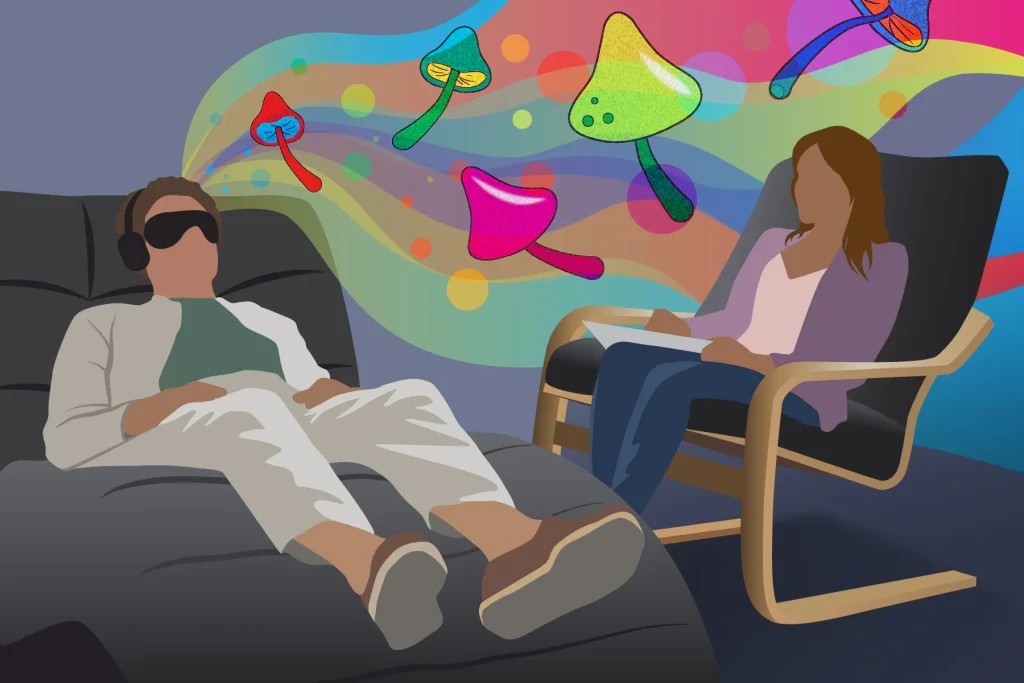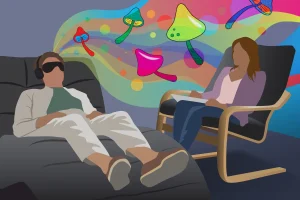For decades, the very idea of using psychedelics in a therapeutic context was, well, fringe. But the tide has turned. Dramatically. We’re now witnessing a renaissance in mental health care, one that combines ancient plant medicines with modern clinical rigor. The result? Psychedelic-assisted therapy.
But this isn’t about taking a substance and hoping for the best. Far from it. The real magic—and the key to its remarkable success in clinical trials—lies in the meticulously designed protocols that guide the entire process. Think of it less like a wild trip and more like a carefully choreographed journey into the psyche, with trained guides holding the map.
What Exactly is a Therapy Protocol in This Context?
Let’s break it down. A psychedelic-assisted therapy protocol is a structured framework. It’s the entire playbook, from the first screening call to the final integration session. This structure is what transforms a powerful psychoactive experience into a genuine therapeutic tool. It ensures safety, maximizes therapeutic potential, and provides a container for the often profound and challenging material that can arise.
Honestly, without this kind of structure, you’re just… well, you’re just taking a drug. The protocol is what makes it therapy.
The Three Pillars of Every Protocol
While specific details vary between substances and research institutions, almost every established protocol is built on three core phases. You can’t really have one without the others; they’re a complete cycle.
1. Preparation: Laying the Groundwork
This is the essential foundation. Preparation sessions, typically 1-3 meetings with the therapy team, are where the relationship is built and intentions are set. It’s not about expecting a specific outcome, but more about clarifying what you hope to explore. Are you dealing with deep-seated trauma? Existential dread? A creative block?
During this phase, therapists assess a patient’s physical and psychological readiness. They’ll go over medical history, current medications, and family mental health history. It’s a thorough vetting process—and for good reason. The goal here is to create a sense of safety and trust, so when the medicine session arrives, the patient can surrender to the experience.
2. The Medicine Session: The Journey Itself
This is the part most people imagine. But it’s not what you see in movies. The setting is deliberately crafted to be soothing, often resembling a comfortable living room more than a clinical office. Soft lighting, curated music playlists, blankets, and an eye mask are standard tools.
The patient takes a measured, pharmaceutical-grade dose of the psychedelic—be it psilocybin, MDMA, or another compound under study. Then, for the next several hours, they lie down and journey inward. Two trained therapists, usually a male-female co-therapy team, are present for the entire duration. They don’t guide the experience, but rather hold the space. They offer support, a hand to hold, a gentle word of encouragement if things get difficult. It’s a bit like having expert midwives for a psychological rebirth.
3. Integration: Weaving the Insights into Life
Here’s the deal: the medicine session itself is just the beginning. The real, lasting change happens during integration. This is the process of making sense of the experience and translating those often ineffable insights into tangible changes in your daily life.
Integration sessions happen in the days and weeks following the medicine session. Patients talk about their journey, work with metaphors and emotions that came up, and discuss how to apply their new perspectives. Without robust integration, a profound psychedelic experience can remain just that—a profound experience, but not necessarily transformative therapy.
A Closer Look at Two Leading Protocols
While the three-phase model is universal, the specifics can look quite different. Let’s compare the two most-researched approaches.
| Protocol Feature | Psilocybin for Depression/Anxiety (e.g., Johns Hopkins model) | MDMA for PTSD (MAPS model) |
| Typical Dose | High dose (25mg+ psilocybin) in 1-2 sessions | Moderate dose, administered in 3+ monthly sessions |
| Therapist RoleLargely non-directive, “holding space” | More actively engaged, can facilitate talk therapy during the session | |
| Session Length | 6-8 hours | 6-8 hours |
| Primary Therapeutic Mechanism | Mystical-type experience, ego dissolution, new perspectives | Enhanced trust and communication, reduced fear while processing trauma |
See the difference? Psilocybin therapy often aims for a single, cathartic, mystical-type experience that reshapes one’s entire worldview. MDMA-assisted therapy, on the other hand, uses the medicine’s empathogenic properties to gently lower the defenses around trauma, allowing a patient to revisit and reprocess painful memories without being overwhelmed by fear. Two different tools, two different protocols, for two different kinds of suffering.
The Unspoken Challenges and Nuances
It’s not all straightforward, of course. These protocols are still being refined. One of the biggest challenges is, honestly, therapist training. It requires a unique blend of skills: the ability to be fully present without controlling the process, to sit with intense emotional expression, and to navigate non-ordinary states of consciousness. It’s a far cry from traditional 50-minute talk therapy.
Another nuance? The music. It sounds minor, but the curated playlists used in these sessions are considered a core therapeutic tool. The music often starts with instrumental, supportive pieces, moves into more expansive, classical music during the peak, and ends with gentle, grounding tones for the return. It’s a soundtrack designed to guide the emotional journey.
What Does The Future Hold For These Models?
As we look ahead, the conversation is shifting from “if” to “how.” How will these therapies be regulated? How can we make them accessible and affordable, avoiding the pitfalls of other specialized treatments? How will protocols adapt for different conditions, like addiction or end-of-life distress?
The current models are just the beginning. We’re likely to see the development of shorter protocols, group administration settings, and even the use of these substances in personal growth contexts for healthy individuals. The blueprint is being redrawn in real-time.
In the end, these psychedelic-assisted therapy protocols represent something profound: a reclamation of healing as a holistic, deeply personal, and courageous process. They offer a structured path not just away from suffering, but toward a more connected, meaningful, and authentic way of being. And that, you know, changes everything.







More Stories
Environmental Medicine and Detoxification: Your Body’s Guide to Modern Living
Ethical Considerations and Advancements in Gene Editing Technologies Like CRISPR
The Gut-Brain Connection: What 2025’s Research Reveals About Our Health